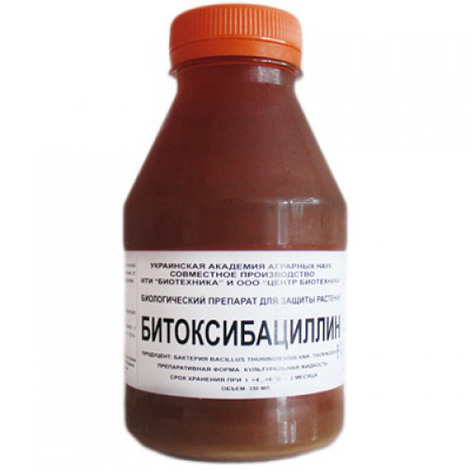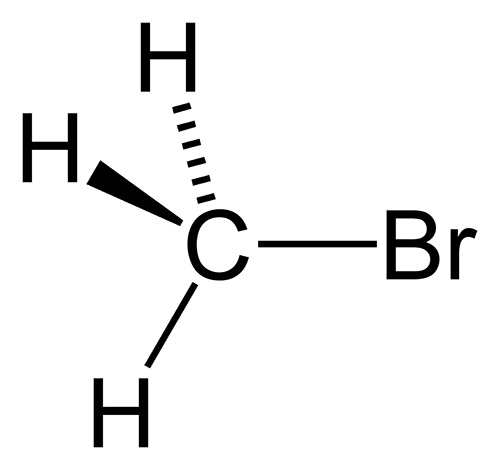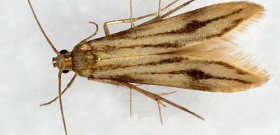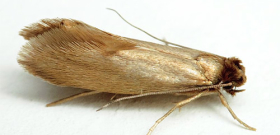
The potato moth has always been a natural neighbor of the famous Colorado potato beetle. It was in South and Central America that it harmed tobacco and potatoes since the time of the ancient Indian civilizations, and only at the beginning of the last century began to spread throughout the world.
First, the countries of Southern Europe submitted to it, then the south of Russia and Africa, and today it is the potato moth that is considered the main pest in New Zealand and Australia. It can be considered a real cosmopolitan, which has already managed to spread across all the continents of the planet.
Such an increase in the range may seem especially surprising, given that the potato moth is a very thermophilic insect. It is believed that its populations can sustainably breed only in places where the average annual temperature does not fall below 10°C. In such areas, this butterfly can become a real scourge of farmers.
Appearance and characteristic differences of the species
The potato moth looks quite unsightly. The general background of its wings is dirty gray with numerous black spots, which, when folding the wings, form two distinct dark stripes. The photo below shows a potato moth with folded and spread wings:
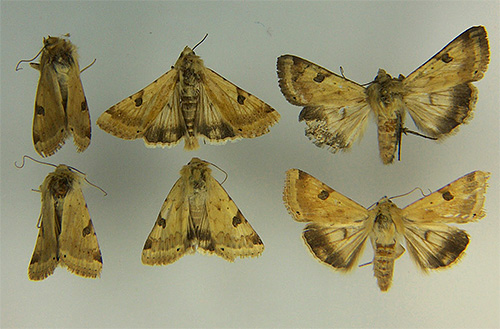
The potato moth butterfly has characteristic long antennae and reduced mouthparts. She cannot eat, and does not live long - usually a few days, very rarely - a few weeks.
The length of the butterfly with folded wings is 6-7 mm, and the protective coloration allows it to remain invisible even when viewed directly from a short distance.
The larvae of the potato moth are small - about 13 mm is the length of the body of the caterpillar of the last age. Such a larva weaves a case in which it pupates and turns into an adult butterfly. The length of the pupa is about 10-12 mm.
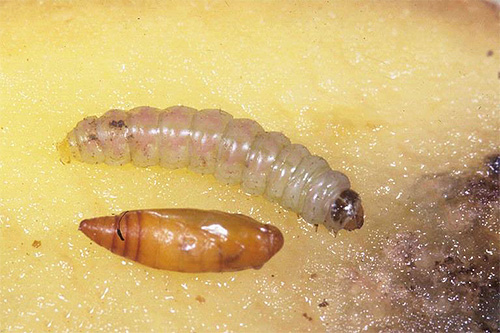
Caterpillars are white-green or white-pink in color with a pale stripe along the entire back.
Potato moth eggs are difficult to spot even at close range. Having a length of about half a millimeter, they are placed by the female on the underside of the leaves in small groups and develop very quickly.
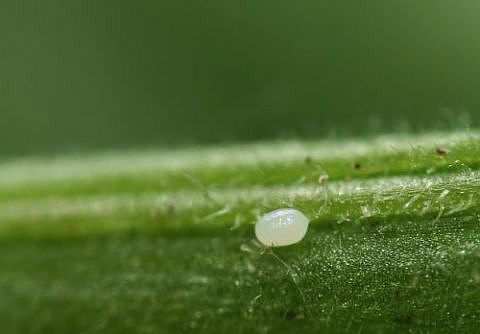
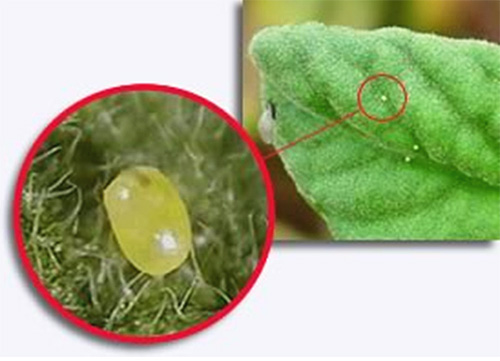
Immediately after laying, such eggs are pure white, and later darken slightly.
Nutrition, reproduction and lifestyle of the pest
Under optimal conditions, the entire life cycle of a potato moth from an egg to laying new eggs by an adult does not last long - about 33-35 days. In winter, this period stretches to several months.
In conditions of middle latitudes, butterflies do not spread far to the North, because they do not know how to hibernate, and at temperatures below minus 4 ° C they die. As a rule, their distribution is limited to the line beyond which the soil freezes below this temperature in winter. With a slight frostbite of potato tubers, the caterpillars in them can remain alive. It is believed that they often move from harvested fields to storage, where they breed in the winter, and in the spring they are again buried in the ground with seed potatoes.
Sometimes butterflies and pupae can overwinter under a layer of leaves in open ground.
Caterpillars of the potato moth feed on various plants of the nightshade family. It can be potatoes, and tomatoes, and nightshade, and eggplant, and pepper, and even belladonna and numerous wild nightshades.
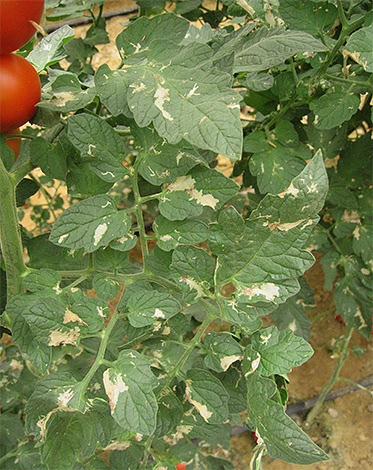
At the same time, the larvae gnaw the leaf blades, and also gnaw the legs of the leaves themselves and feed on the tubers. It is because of this versatility that the potato moth has the ability to spread very widely and quickly.
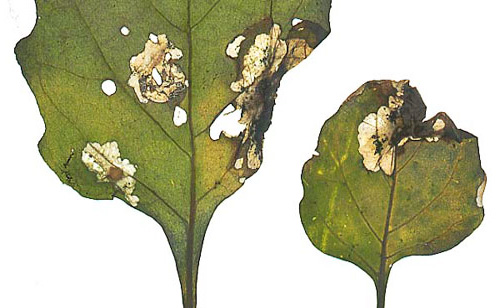
Potato moth butterflies are active at night and have a huge number of enemies. They feed on all and sundry - and other insects, and bats, and birds. At the same time, the life expectancy of an adult butterfly is at most several weeks, during which it manages to mate and lay eggs. In one summer season in the south of Ukraine, the moth manages to give 3-4 generations.
Potato moth breeds equally successfully in closed warehouses, on agricultural land and in the wild. However, it is in the first two places that its reproduction is practically not controlled by natural enemies, and the butterfly can reproduce at an ultra-fast pace. And already its caterpillars will cause the main harm.
Danger and harm of potato moth
The main danger of potato moth is as follows:
- weakening of bushes of agricultural plants due to the destruction and mining of leaves
- damage to potato tubers and reduced crop quality
- reduction in the quality and volume of potato seed
- weakening and death of young tomato and pepper bushes.
A potato tuber affected by 9-10 caterpillars at the same time will look like a sponge in which the larvae almost completely eat away the core.
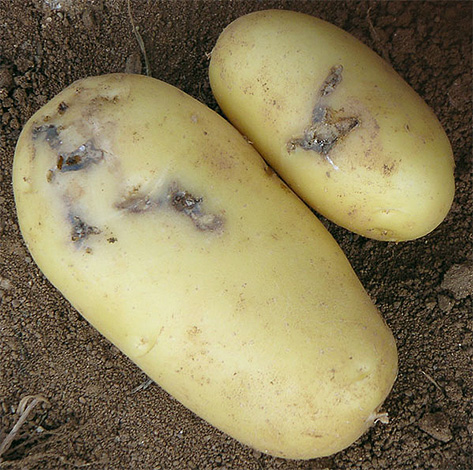
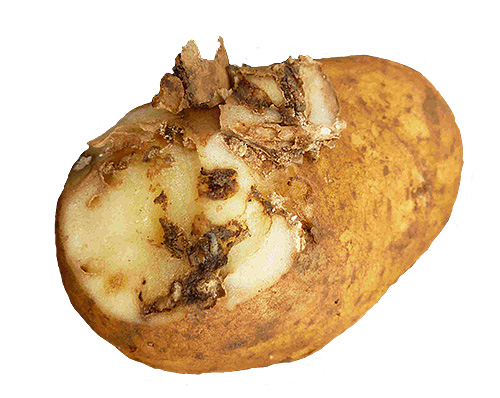
In the presence of a large number of insects and comfortable breeding conditions for them, the moth multiplies faster than the fodder crop itself develops. At the beginning of spring, a small number of larvae diligently destroy young and tender seedlings, later they harm adult plants, and the maximum number of caterpillars is hatched when tubers and fruits develop on the bushes.
In places with severe potato moth infestation, up to 80% of the crop is not suitable for export due to the loss of the ability to be stored and processed.
The fight against potato moth: measures and means
One hundred percent methods of dealing with potato moths have not been developed today. The fight against it should be comprehensive and consist of both liquidation and preventive measures.
To destroy the butterflies and caterpillars themselves, the following means are used:
- Preparations based on bacteria Bacillus thuringiensis - Bitoxibacillin, Dendrobatcillin, Entobacterin, Lepidocid. They process bushes at any stage of development before the appearance of ovaries, and such measures ensure the death of part of the larvae, a decrease in the fertility of females and a delay in the development of moths at each stage;

- Methyl bromide is a gas that allows you to deal with potato moths after harvesting potatoes (the method of fumigation with methyl bromide is used to process tubers stored for storage);

- Special traps for butterflies and larvae.
Measures to combat potato moths also include competent crop rotation, hilling potato and tomato bushes, laying only healthy tubers to the maximum depth for the variety.
A good preventive way to get rid of potato moths is to grow only early varieties of potatoes, which are practically not afraid of the pest.
The tubers themselves must be carefully checked before sowing and weed out those that show signs of damage. This will help, if not to get rid of the potato moth completely, then at least significantly reduce the extent of the damage to the site by it. It is even better to heat the tubers for several hours at a temperature of 40 ° C - this will not reduce their germination, but will kill a significant part of the moth larvae.
It is also very important to control the growth of weeds at the borders of the cultivated area.
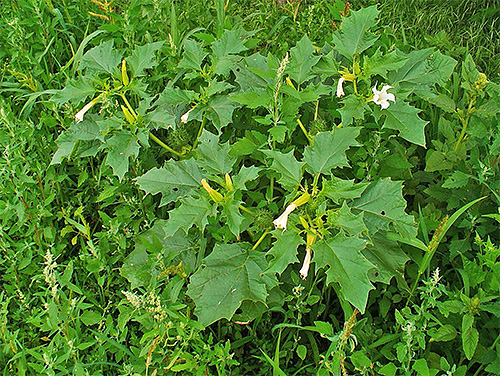
All wild nightshades near the site are natural reservoirs of the pest, from which the moth easily moves to garden crops.
On a note
Many farmers in South Africa attract a special type of wasp to their farms, which are parasites of potato moth larvae. These wasps do not live in the northern hemisphere.
Today, many countries comply with quarantine measures against potato moths. For example, the import of potato tubers to Ukraine by private individuals is prohibited, and potatoes imported to Australia are subject to mandatory heating and treatment with insecticides. But even despite such measures, the potato moth successfully continues to conquer the world.
Useful video: about the danger of potato moth invasion

